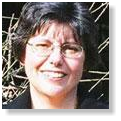



Conference Secretariat: Conferences & Events Ltd Contact: nzsee@confer.co.nz

Mary C. Comerio
Professor of the Graduate School (Architecture)
Mary Comerio is an internationally recognized expert on disaster recovery. She joined the faculty of the Department of Architecture at
recovery. She joined the faculty of the Department of Architecture at UC Berkeley in 1978 and served as chair from 2006-09. As an
UC Berkeley in 1978 and served as chair from 2006-09. As an architect, she has designed numerous public and private facilities
architect, she has designed numerous public and private facilities including market-rate and affordable housing. In the last two decades, her research has
including market-rate and affordable housing. In the last two decades, her research has focused on the costs and benefits of seismic rehabilitation for existing buildings
focused on the costs and benefits of seismic rehabilitation for existing buildings (particularly housing), post-disaster recovery and reconstruction, and loss modeling.
Professor Comerio was the principal investigator on the pilot study for the Disaster
(particularly housing), post-disaster recovery and reconstruction, and loss modeling.
Professor Comerio was the principal investigator on the pilot study for the Disaster Resistant University Initiative funded by the Federal Emergency Management Agency and
Resistant University Initiative funded by the Federal Emergency Management Agency and UC Berkeley in 1998. The research on the economic impacts of disaster losses on the UC
UC Berkeley in 1998. The research on the economic impacts of disaster losses on the UC Berkeley campus was published in 2000, along with a strategic plan for risk management.
Berkeley campus was published in 2000, along with a strategic plan for risk management. In April 2006, the Applied Technology Council and Engineering News-Record selected the
In April 2006, the Applied Technology Council and Engineering News-Record selected the Disaster Resistant University Program as one of its top U.S. seismic projects of the 20th
Disaster Resistant University Program as one of its top U.S. seismic projects of the 20th century.
Other projects include a 2004 study of the impacts from contents losses in science
century.
Other projects include a 2004 study of the impacts from contents losses in science laboratories with colleagues at the Pacific Earthquake Engineering Research (PEER) Center
laboratories with colleagues at the Pacific Earthquake Engineering Research (PEER) Center and downtime modeling for the PEER performance-based earthquake engineering
and downtime modeling for the PEER performance-based earthquake engineering methodology. Professor Comerio is currently working on a Network for Earthquake
methodology. Professor Comerio is currently working on a Network for Earthquake Engineering Simulation (NEES) Grand Challenge project titled "Mitigation of Collapse Risk
Engineering Simulation (NEES) Grand Challenge project titled "Mitigation of Collapse Risk of Older Concrete Buildings."
of Older Concrete Buildings." For the 2009-10 academic year, Professor Comerio served as a Visiting Fellow at the
For the 2009-10 academic year, Professor Comerio served as a Visiting Fellow at the Public Policy Institute of California, and consulted with the United Nations Environment
Public Policy Institute of California, and consulted with the United Nations Environment Program (UNEP) Post-Conflict and Disaster Management branch on rebuilding after
Program (UNEP) Post-Conflict and Disaster Management branch on rebuilding after disasters in China and Haiti
disasters in China and Haiti TITLE: Resilience: An Engineering Challenge
TITLE: Resilience: An Engineering Challenge ABSTRACT
Risk modeling has focused on the "3Ds: Deaths, Dollars and Downtime" as metrics for
ABSTRACT
Risk modeling has focused on the "3Ds: Deaths, Dollars and Downtime" as metrics for estimating building and infrastructure performance as well as for decision-making in
estimating building and infrastructure performance as well as for decision-making in design and in policy development. What can these metrics tell us about performance and
design and in policy development. What can these metrics tell us about performance and resilience in recent disasters? What other measures of performance are suggested by the
resilience in recent disasters? What other measures of performance are suggested by the recovery experience in both developed and developing countries? What are the
recovery experience in both developed and developing countries? What are the engineering challenges and research opportunities coming out of recent earthquakes in
engineering challenges and research opportunities coming out of recent earthquakes in China, Haiti, Chile, New Zealand and Japan, and how are they applicable to the U.S.
China, Haiti, Chile, New Zealand and Japan, and how are they applicable to the U.S. context? Are there better engineering metrics for resilience?
The performance metrics typically used by engineers use work component by component
context? Are there better engineering metrics for resilience?
The performance metrics typically used by engineers use work component by component (e.g. for a building or bridge) but not for a city. Resilience requires metrics that look at
(e.g. for a building or bridge) but not for a city. Resilience requires metrics that look at the performance of community components such as housing, education, civic and cultural
the performance of community components such as housing, education, civic and cultural infrastructure. Looking at case studies of recovery from recent earthquakes—primarily
infrastructure. Looking at case studies of recovery from recent earthquakes—primarily Maule and Christchurch—we see that the "3 Ds" don't tell us much about recovery.
Maule and Christchurch—we see that the "3 Ds" don't tell us much about recovery. Available funding, political will, creative planning, and good technical implementation
Available funding, political will, creative planning, and good technical implementation typically govern the speed and quality of recovery.
To improve resilience, our professions need to have a voice and participation in the kind of
land use/policy planning that usually takes place without our input and we need to re-
typically govern the speed and quality of recovery.
To improve resilience, our professions need to have a voice and participation in the kind of
land use/policy planning that usually takes place without our input and we need to re- think performance measures and building codes in order to develop methods of setting
think performance measures and building codes in order to develop methods of setting performance guidelines for cities. How we improve overall performance and resilience in
performance guidelines for cities. How we improve overall performance and resilience in countries with good codes and land use practices as well as in developing countries are
countries with good codes and land use practices as well as in developing countries are challenges for the 21st Century.
Back to Speakers overview
challenges for the 21st Century.
Back to Speakers overview
 recovery. She joined the faculty of the Department of Architecture at
recovery. She joined the faculty of the Department of Architecture at UC Berkeley in 1978 and served as chair from 2006-09. As an
UC Berkeley in 1978 and served as chair from 2006-09. As an architect, she has designed numerous public and private facilities
architect, she has designed numerous public and private facilities including market-rate and affordable housing. In the last two decades, her research has
including market-rate and affordable housing. In the last two decades, her research has focused on the costs and benefits of seismic rehabilitation for existing buildings
focused on the costs and benefits of seismic rehabilitation for existing buildings (particularly housing), post-disaster recovery and reconstruction, and loss modeling.
Professor Comerio was the principal investigator on the pilot study for the Disaster
(particularly housing), post-disaster recovery and reconstruction, and loss modeling.
Professor Comerio was the principal investigator on the pilot study for the Disaster Resistant University Initiative funded by the Federal Emergency Management Agency and
Resistant University Initiative funded by the Federal Emergency Management Agency and UC Berkeley in 1998. The research on the economic impacts of disaster losses on the UC
UC Berkeley in 1998. The research on the economic impacts of disaster losses on the UC Berkeley campus was published in 2000, along with a strategic plan for risk management.
Berkeley campus was published in 2000, along with a strategic plan for risk management. In April 2006, the Applied Technology Council and Engineering News-Record selected the
In April 2006, the Applied Technology Council and Engineering News-Record selected the Disaster Resistant University Program as one of its top U.S. seismic projects of the 20th
Disaster Resistant University Program as one of its top U.S. seismic projects of the 20th century.
Other projects include a 2004 study of the impacts from contents losses in science
century.
Other projects include a 2004 study of the impacts from contents losses in science laboratories with colleagues at the Pacific Earthquake Engineering Research (PEER) Center
laboratories with colleagues at the Pacific Earthquake Engineering Research (PEER) Center and downtime modeling for the PEER performance-based earthquake engineering
and downtime modeling for the PEER performance-based earthquake engineering methodology. Professor Comerio is currently working on a Network for Earthquake
methodology. Professor Comerio is currently working on a Network for Earthquake Engineering Simulation (NEES) Grand Challenge project titled "Mitigation of Collapse Risk
Engineering Simulation (NEES) Grand Challenge project titled "Mitigation of Collapse Risk of Older Concrete Buildings."
of Older Concrete Buildings." For the 2009-10 academic year, Professor Comerio served as a Visiting Fellow at the
For the 2009-10 academic year, Professor Comerio served as a Visiting Fellow at the Public Policy Institute of California, and consulted with the United Nations Environment
Public Policy Institute of California, and consulted with the United Nations Environment Program (UNEP) Post-Conflict and Disaster Management branch on rebuilding after
Program (UNEP) Post-Conflict and Disaster Management branch on rebuilding after disasters in China and Haiti
disasters in China and Haiti TITLE: Resilience: An Engineering Challenge
TITLE: Resilience: An Engineering Challenge ABSTRACT
Risk modeling has focused on the "3Ds: Deaths, Dollars and Downtime" as metrics for
ABSTRACT
Risk modeling has focused on the "3Ds: Deaths, Dollars and Downtime" as metrics for estimating building and infrastructure performance as well as for decision-making in
estimating building and infrastructure performance as well as for decision-making in design and in policy development. What can these metrics tell us about performance and
design and in policy development. What can these metrics tell us about performance and resilience in recent disasters? What other measures of performance are suggested by the
resilience in recent disasters? What other measures of performance are suggested by the recovery experience in both developed and developing countries? What are the
recovery experience in both developed and developing countries? What are the engineering challenges and research opportunities coming out of recent earthquakes in
engineering challenges and research opportunities coming out of recent earthquakes in China, Haiti, Chile, New Zealand and Japan, and how are they applicable to the U.S.
China, Haiti, Chile, New Zealand and Japan, and how are they applicable to the U.S. context? Are there better engineering metrics for resilience?
The performance metrics typically used by engineers use work component by component
context? Are there better engineering metrics for resilience?
The performance metrics typically used by engineers use work component by component (e.g. for a building or bridge) but not for a city. Resilience requires metrics that look at
(e.g. for a building or bridge) but not for a city. Resilience requires metrics that look at the performance of community components such as housing, education, civic and cultural
the performance of community components such as housing, education, civic and cultural infrastructure. Looking at case studies of recovery from recent earthquakes—primarily
infrastructure. Looking at case studies of recovery from recent earthquakes—primarily Maule and Christchurch—we see that the "3 Ds" don't tell us much about recovery.
Maule and Christchurch—we see that the "3 Ds" don't tell us much about recovery. Available funding, political will, creative planning, and good technical implementation
Available funding, political will, creative planning, and good technical implementation typically govern the speed and quality of recovery.
To improve resilience, our professions need to have a voice and participation in the kind of
land use/policy planning that usually takes place without our input and we need to re-
typically govern the speed and quality of recovery.
To improve resilience, our professions need to have a voice and participation in the kind of
land use/policy planning that usually takes place without our input and we need to re- think performance measures and building codes in order to develop methods of setting
think performance measures and building codes in order to develop methods of setting performance guidelines for cities. How we improve overall performance and resilience in
performance guidelines for cities. How we improve overall performance and resilience in countries with good codes and land use practices as well as in developing countries are
countries with good codes and land use practices as well as in developing countries are challenges for the 21st Century.
Back to Speakers overview
challenges for the 21st Century.
Back to Speakers overview














Conference Partners
Platinum Sponsor
Gold Sponsors
Silver Sponsors
Bronze Sponsor
Sponsor
Heritage Session and
Keynote Sponsor
Supporter



























